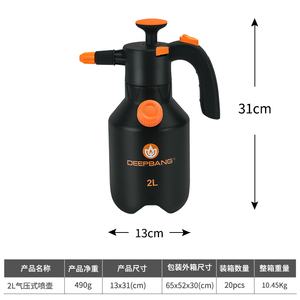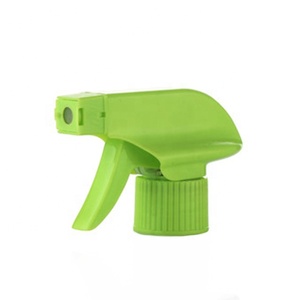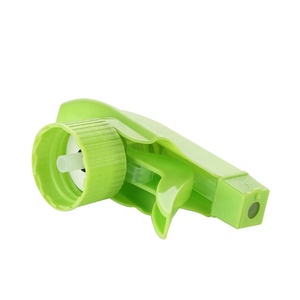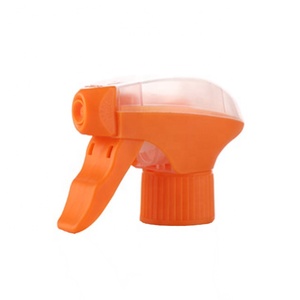
All categories
Featured selections
Trade Assurance
Buyer Central
Help Center
Get the app
Become a supplier

(102 products available)







































The sprayer bottle nozzle mould is a useful tool for producing sprayer nozzles. The types of sprayer bottle nozzle moulds can be classified as follows:
Sprayer bottle trigger nozzle mould
The trigger nozzle mould is used for making trigger nozzles. This type of sprayer is commonly used in cleaning products, gardening, and hair styling. The trigger mechanism allows easy and controlled spraying. These nozzles are made using trigger nozzle sprayer bottle moulds. They are durable and efficient, and the nozzles fit various trigger bottles.
Fine mist sprayer bottle nozzle mould
This sprayer bottle nozzle mould is for making fine mist nozzles. These nozzles produce a fine, even mist, ideal for applying perfumes, air fresheners, and light gardening products. The nozzle design ensures consistent particle size and coverage. It is suitable for making fine mist spray bottles.
Coarse mist sprayer bottle nozzle mould
The coarse mist nozzle sprayer bottle mould is designed to make nozzles that produce a coarse mist. This type of nozzle is suitable for large-scale applications or for products that need to cover a large area quickly. It is ideal for things like insecticides and some hair products. The mould is used to make coarse mist spray bottles.
Adjustable nozzle sprayer bottle mould
These moulds are for making adjustable nozzles. The adjustable feature allows users to change the spray pattern or flow rate as required. They are versatile and can be used for various products, including perfumes, cleaners, and gardening products. The adjustable nozzle sprayer bottle moulds make flexible nozzles for different applications.
The design of a sprayer bottle nozzle mould is intricate and needs careful consideration of many factors to ensure the creation of a durable, effective, and high-quality product. The design process comprises several stages, including requirement analysis, material selection, structural design, and validation through testing.
Requirements analysis:
The first step is to gather all the necessary information about the product, such as its intended use, the type of liquid to be sprayed, and the desired spray pattern. This analysis helps identify the critical features and specifications that the nozzle must have. For example, a garden sprayer may need a wide spray pattern for covering large areas, while a perfume sprayer requires a fine mist for delicate application.
Material selection:
Choosing suitable materials for both the nozzle and the mould is crucial. Common materials for nozzles include plastics like polypropylene and polyethylene, as well as metals like brass or stainless steel, depending on the application and required durability. The mould material also needs to withstand repeated injection cycles and the pressure and temperature of molten plastic. Steel and alloy are common choices for mould materials due to their strength and durability.
Structural design:
The structural design involves creating detailed drawings and specifications for the nozzle and the mould. This includes dimensions, shapes, and tolerances for the nozzle components, ensuring a proper fit and function. The mould design must accommodate features like cooling channels for heat removal, alignment pins for precise positioning, and ejection systems to remove the finished nozzle from the mould. Additionally, considerations for manufacturing feasibility and cost-effectiveness are made to ensure the design can be produced within budget and time constraints.
Testing and validation:
Testing and validation are essential to ensure the nozzle design meets the requirements. Prototype nozzles may be fabricated using rapid prototyping techniques to evaluate performance and fit. Testing involves assessing the spray pattern, flow rate, and durability of the nozzle under simulated conditions. Any necessary design modifications are made based on the test results to improve the nozzle's functionality and reliability.
Overall, designing a sprayer bottle nozzle mould requires a multidisciplinary approach involving mechanical, chemical, and materials engineering to create a nozzle that meets the performance and usability requirements of the sprayer bottle.
Personal care
Sprayer nozzles are used in the manufacture of bottles that carry hair sprays, perfumes, deodorants, and other personal care products. These nozzles enable users to apply these products directly onto the hair, skin, or into the air for inhalation. The nozzle design determines the spray pattern and fine mist of the product. Personal care items like perfumes rely on nozzle design to give a luxurious and appealing mist when sprayed. Some nozzles allow for a broad spray that covers a larger area within a short time while others give a concentrated spray for precise application.
Household cleaners
Household cleaning sprays such as all-purpose cleaners, air fresheners, glass cleaners, and insect repellents use sprayer bottle nozzles for application. These cleaning products make house chores easy with a fine mist that coats surfaces. In kitchens, bathrooms, and living rooms, nozzles designed for broad spray patterns quickly cover large areas with the insect repellent. Specialized nozzle designs give a more directed spray for specific applications like window cleaners.
Gardening
Garden sprays and insecticides packed in spray bottles use nozzle designs to cover plants and flowers with chemicals to kill pests. The nozzles come in different designs to suit the gardening needs. Some nozzles give a broad spray to cover large areas of the garden quickly while others give a directed spray to concentrate on specific plants.
Industrial applications
Industrial chemicals, solvents, and cleaners packed in spray bottles make use of sprayer nozzle designs to apply these substances. The nozzles facilitate the application of heavy-duty cleaners for machine parts, equipment, and tools. Some nozzle designs give a fine spray that conserves the chemical usage while others give a wider spray to hasten the cleaning process.
Food and beverages
Food flavoring sprays, cooking oil sprays, and air fresheners for food applications use sprayer nozzle designs to pump out the content. Nozzle designs in this category are suitable for dispensing oils in frying pans or flavoring food before cooking. Some nozzle designs give a fine mist that evenly coats the surface of the food while others give a wider spray that covers a larger area within a short time.
Pharmaceuticals
Product Compatibility:
When choosing a sprayer bottle nozzle mold, it is very important to ensure that the mold is compatible with the product that will be sprayed from the bottle. Different products have different requirements for how the nozzle works. For example, if the product is a thick cleaner, a mold with a nozzle that can handle thick liquids should be chosen. On the other hand, if the product is a perfume, a mold with a fine mist spray would be more suitable.
Material Selection:
The material used for the sprayer bottle nozzles is very important. Nozzles made from durable materials like polypropylene or polyethylene can last a long time. These materials are resistant to breaking and working well even after being used many times. Choosing the right material for the nozzle is important so it will not get damaged and will continue to work as expected over time. If the wrong material is used, the nozzle could break quickly or clog up and stop working. The nozzle material needs to be suitable for the type of product in the bottle so it does not get damaged.
Design and Functionality:
The design of the sprayer bottle nozzle mold affects how well it works. Nozzles designed to fit people's fingers comfortably are easier to use. Designs that allow for adjusting the spray distance or pattern let users choose how the product is applied. Nozzles that are simple and work reliably make for a better user experience. Designs with fewer small parts lead to less chance of something breaking. Considering these design aspects when selecting a mold helps ensure the nozzles produced will be user-friendly and function well.
Sustainability:
With people caring more about the environment, using sustainable materials for sprayer bottle nozzles is becoming important. When choosing a nozzle mold, it is good to consider if the materials can break down naturally or be recycled. This reduces waste that could happen from using these products. Also, molds that allow for making reusable nozzles instead of single-use ones help decrease the environmental impact. Thinking about sustainability while selecting a sprayer nozzle mold helps protect the planet.
Q1: What are the benefits of using a sprayer bottle nozzle mold made from brass?
A1: Brass is a durable material; therefore, a sprayer bottle nozzle mold made from brass can last long. It can withstand high pressures and extreme temperatures. Additionally, brass is resistant to corrosion, which ensures that the mold can produce consistent and high-quality nozzles over an extended period.
Q2: How do I choose a sprayer bottle nozzle mold supplier?
A2: While choosing a supplier, consider the factors such as their sprayer nozzle molds' quality, the materials used, their production capacity, and the lead time. Also, consider their customer service and ability to respond to inquiries and concerns promptly. Check their reviews and ratings to understand other customers' experiences.
Q3: How can one maintain a sprayer bottle nozzle mold?
A3: To maintain the mold, it must be cleaned regularly to remove any plastic residue or contaminants. Also, inspect the mold for any signs of wear or damage. Ensure that the mold is properly aligned and secured during the injection molding process. Maintain proper temperature and pressure during injection molding to prevent mold damage.